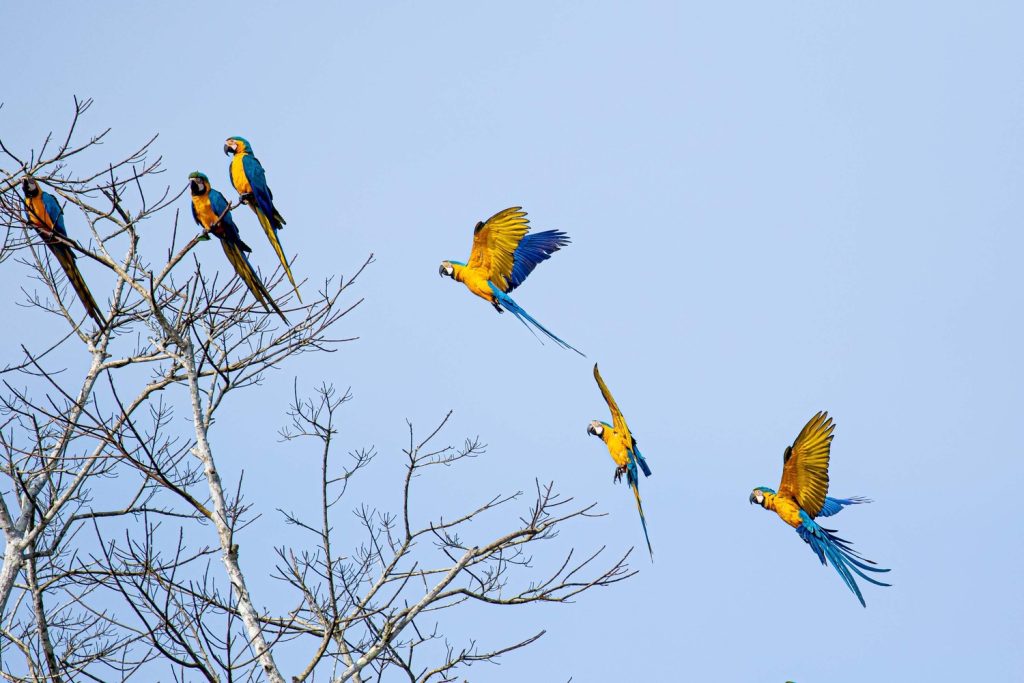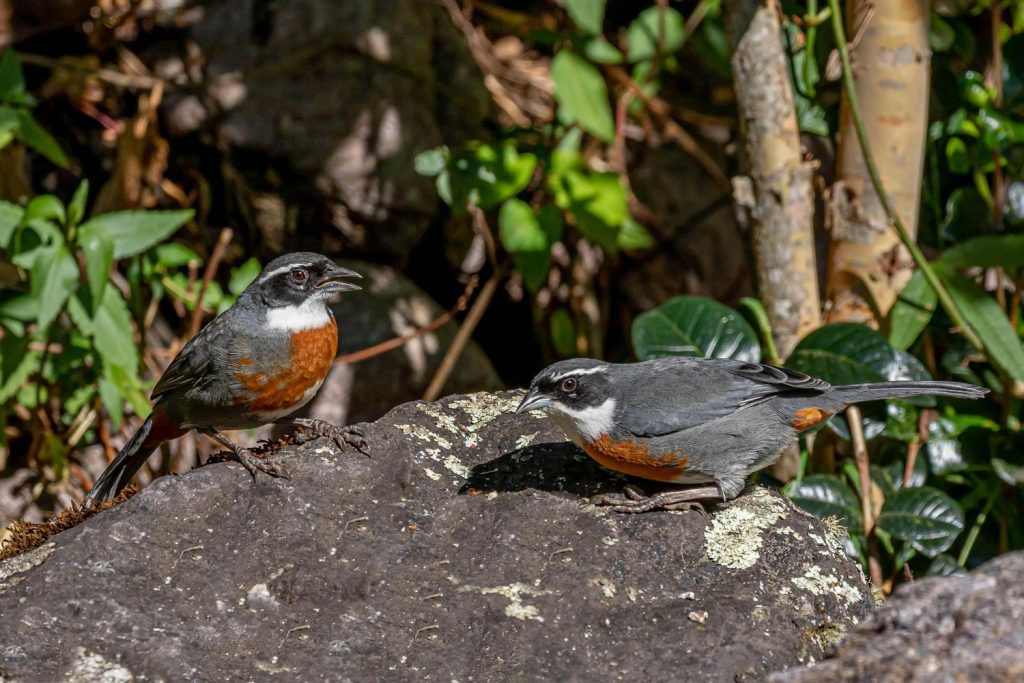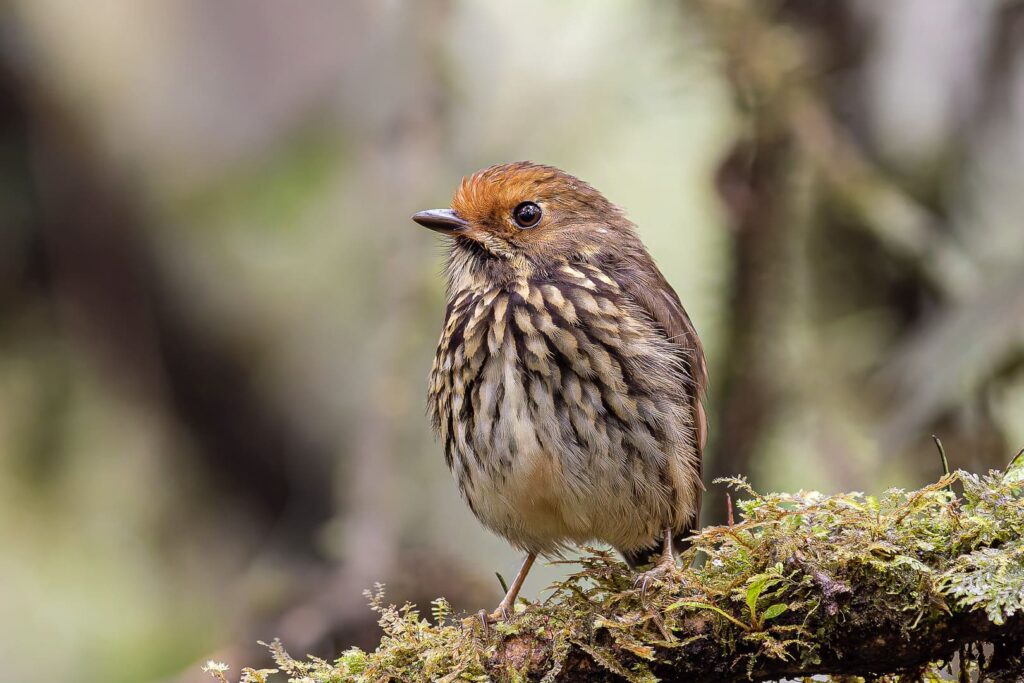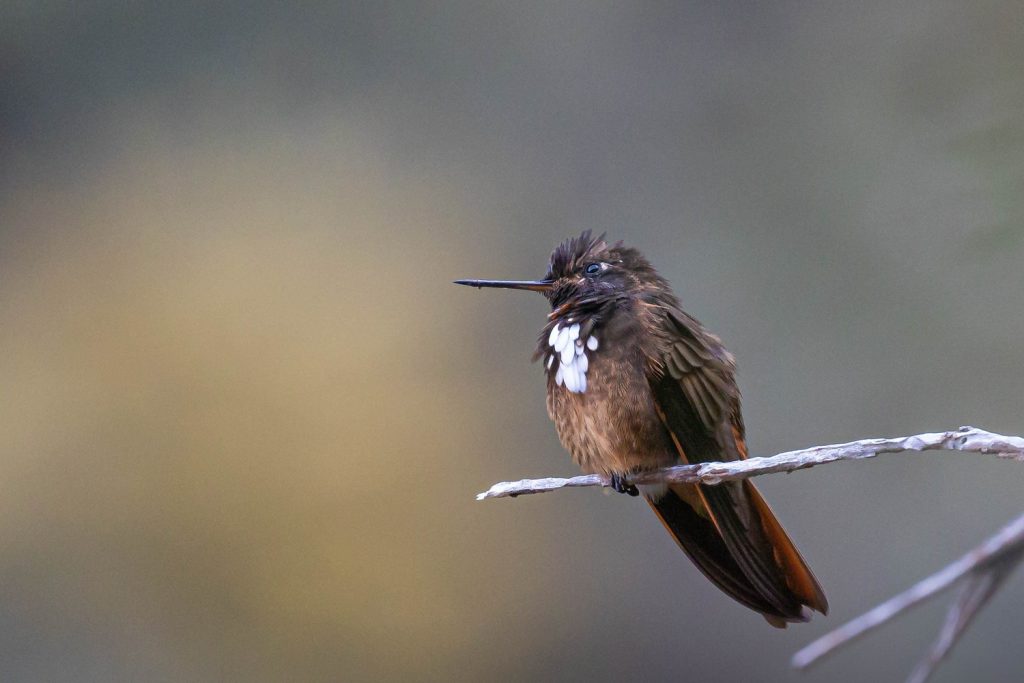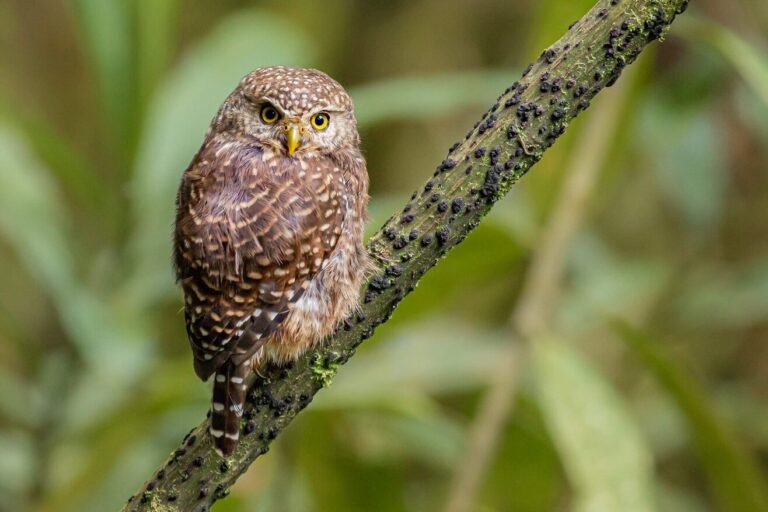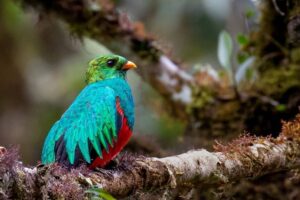Hidden within the misty cloud forests of north-central Peru lies a bird so striking and unique that it has captured the imagination of ornithologists and bird lovers alike: the Scarlet-banded Barbet. Known for its vibrant colors and its rarity, this species represents one of the most exciting bird discoveries in recent decades.
With a population estimated at fewer than 1,000 individuals, this elusive bird is found only on an isolated plateau between the Huallaga and Ucayali rivers. Its small range and unique habitat make it a species of global importance, classified as Vulnerable by BirdLife International.
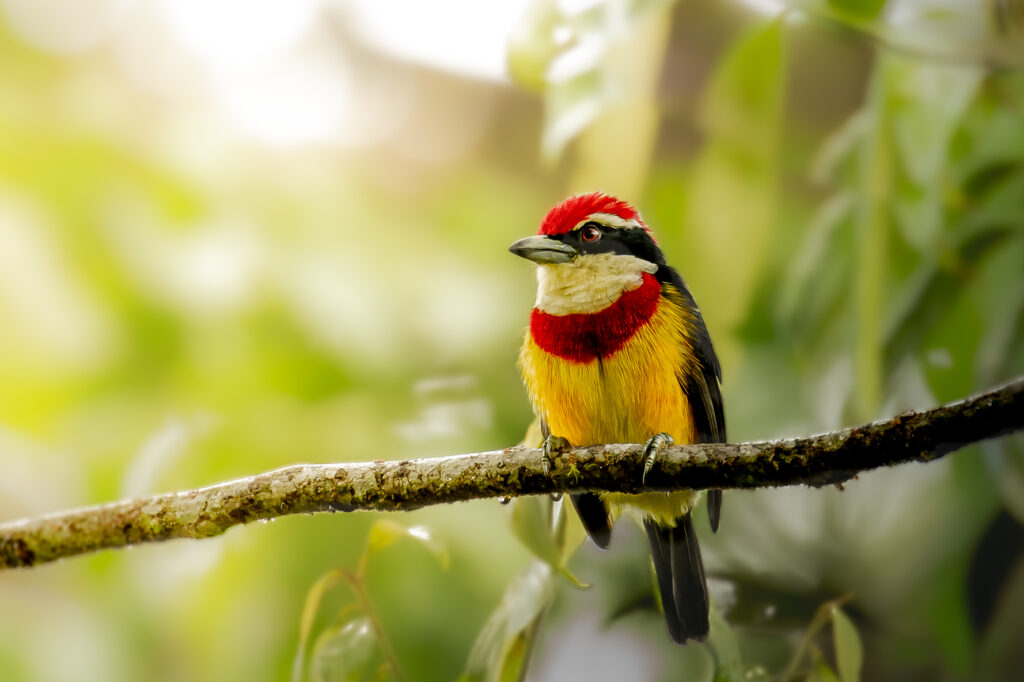
Characteristic features
The Scarlet-banded Barbet boasts a bold, colorful appearance that’s hard to forget. Males wear a scarlet crown and breastband, set against a backdrop of black, white, and yellow feathers. A bright yellow belly and contrasting white throat give the bird an unmistakable look, while the females add their own charm with subtle golden and buff markings. Juvenile birds, while less vibrant, still display red and yellow tones that hint at their mature splendor.
Interestingly, the bird’s wings produce a distinctive whirring noise during flight, a nonvocal sound that adds to its mystique and highlights its unique behavior.
Despite its bold colors and striking appearance, the Scarlet-banded Barbet is a relatively small bird, measuring just about 19.5 cm (7.7 inches) in length—roughly the size of a medium apple. Its compact frame is complemented by a strong bill, perfect for plucking fruits and probing for insects.
The bird’s weight ranges between 63 to 78 grams (2.2 to 2.7 ounces), making it light enough to navigate the dense canopies of Peru’s cloud forests with ease. For comparison, that’s about the same weight as a large egg. Males and females share similar proportions, though subtle differences in plumage help distinguish the sexes.
Even with its small size, the Scarlet-banded Barbet commands attention with its vibrant red, yellow, black, and white feathers. Its physical characteristics not only make it a standout species in Peru’s rich biodiversity but also allow it to thrive in the challenging montane environments it calls home.
Find more info here.
A Fragile Habitat: Home Among the Cloud forest
The Scarlet-banded Barbet thrives in the montane forests of Peru, particularly at elevations between 950 and 1,500 meters. These cloud forests are rich in mosses, epiphytes, and ferns, creating a lush and humid environment ideal for the species. Its preferred habitats include ridge tops and slopes with tall, dense vegetation, as well as areas with a mix of woody shrubs and smaller trees.
Despite sharing its range with other species, such as the Gilded Barbet, the Scarlet-banded Barbet coexists harmoniously, showing no signs of competition. The remoteness of its habitat offers some natural protection from human disturbances, but any future deforestation or development could severely threaten its survival.
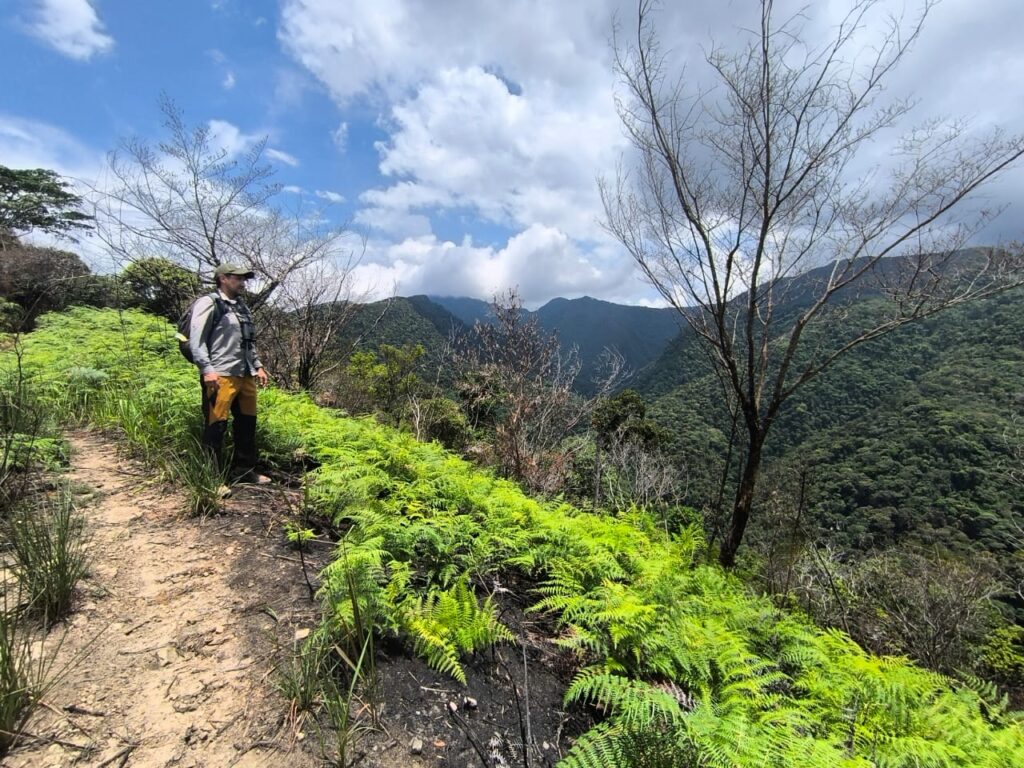

Where does it feed?
Like many other barbet species, the Scarlet-banded Barbet is primarily frugivorous, relying on a diet of berries and other fruits found in the forest canopy. The bird methodically forages by plucking berries from fruiting branches, often creeping along the branches to probe moss and lichens for hidden food. While fruits make up the majority of its diet, some insects are also consumed, particularly when feeding nestlings.
Observers often spot the barbet foraging in pairs, small groups, or even mixed flocks that include species like toucanets, becards, and tanagers. This social behavior not only aids in locating food but also highlights its adaptability within the complex ecosystem of the cloud forest.
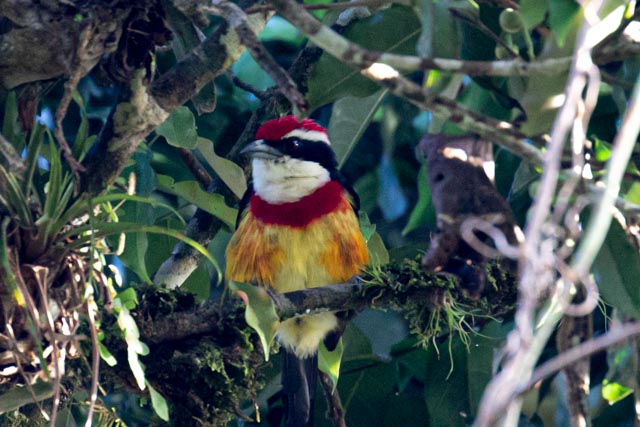
A Species Shrouded in Mystery
Although first discovered in 1996, much about the Scarlet-banded Barbet remains unknown. Researchers have yet to document its nests, eggs, or detailed breeding behaviors. It’s speculated that the bird’s isolated population may represent a relict of a formerly larger distribution, making its conservation even more urgent.
The barbet’s vocalizations provide some clues to its behavior. Its song is a fast, low-pitched trill resembling distant woodpecker drumming, while its calls include harsh grunts and stuttering notes often exchanged between mates. Inside roost holes, quiet groans and clucks have also been heard, adding another layer of intrigue to this enigmatic species.
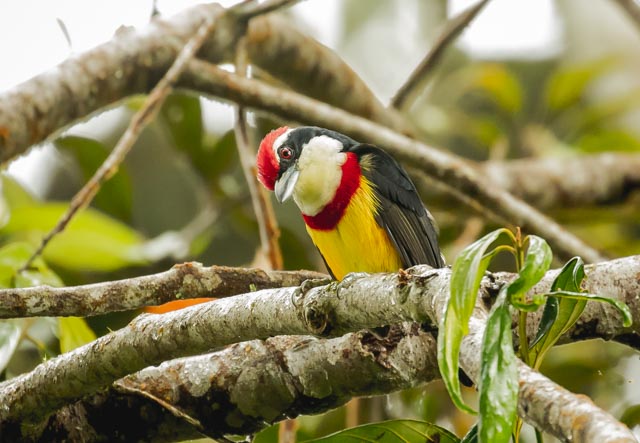
Where to Find the Scarlet-banded Barbet in Its Natural Habitat
Nestled within the vast expanse of Cordillera Azul National Park, the Scarlet-banded Barbet finds a sanctuary unlike any other. Located between the Ucayali and Huallaga rivers in northern Peru, this remote and untouched park is a haven for biodiversity, offering a pristine habitat for countless rare and endemic species.
For bird enthusiasts, Cordillera Azul is a dream destination. Its isolation from human activity has allowed species like the Scarlet-banded Barbet to thrive in its tropical montane forests, far from the disturbances of urban development. Sharing this remarkable habitat are other elusive species such as the recently discovered Cordillera-azul Antbird and the Yungas Woodcreeper, making the park a hotspot for ornithological discovery.
Whether you’re captivated by the Barbet’s vibrant plumage or drawn to the untouched beauty of the park itself, a journey to Cordillera Azul National Park promises a once-in-a-lifetime adventure. Explore this natural gem and immerse yourself in the wild heart of Peru!
Best birding tours for Scarlet-banded Barbet
Very few tours go to the place known Plataforma or Flor de Café (although there is another town with the same name nearby which can cause confusion when going to the right spot). A beautiful but still isolated village with several coffee plantations.
Check some of our birding tours specifially for Scarlet-banded Barbet here:
See one of our trip reports here.
Conservation: A Race Against Time
Classified as Vulnerable, the Scarlet-banded Barbet faces an uncertain future. Its population is estimated to be between 250 and 999 individuals, restricted to two small and isolated areas in Peru. Habitat loss due to logging, agriculture, or infrastructure development would pose a significant threat to its survival, as the bird relies on the undisturbed cloud forest for shelter, food, and breeding.
Fortunately, the remoteness of its montane habitat provides some degree of protection, and its striking appearance has brought attention to the need for conservation. Preserving its habitat is essential not only for the Scarlet-banded Barbet but also for the countless other species that share its home.
A Living Treasure of Peru
With its brilliant colors, mysterious behaviors, and limited distribution, the Scarlet-banded Barbet is a true symbol of the biodiversity found in Peru’s cloud forests. For birders, researchers and conservationists, this remarkable species serves as a reminder of the importance of protecting fragile ecosystems and the incredible life they sustain.




